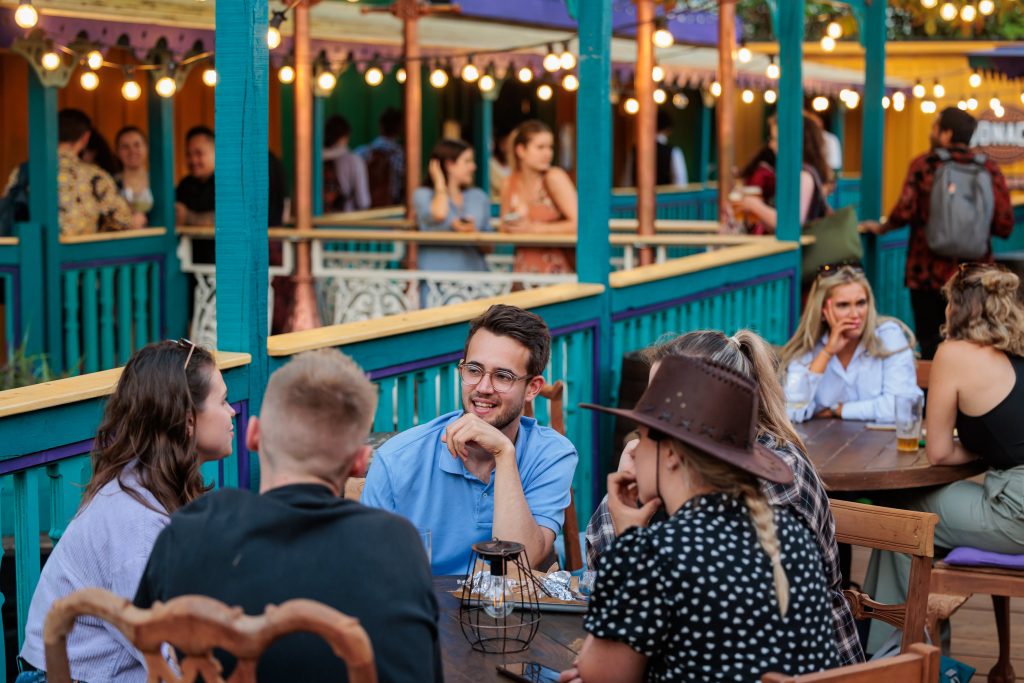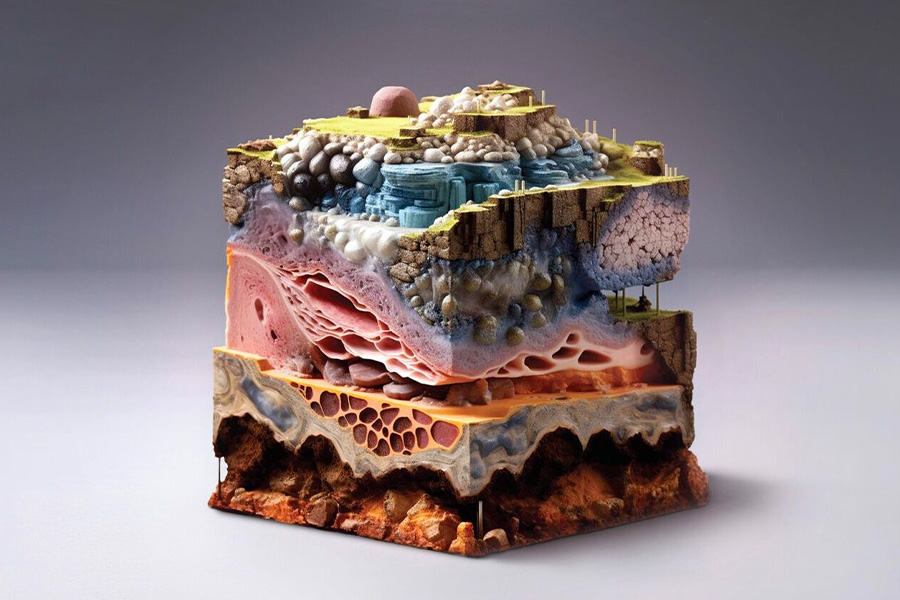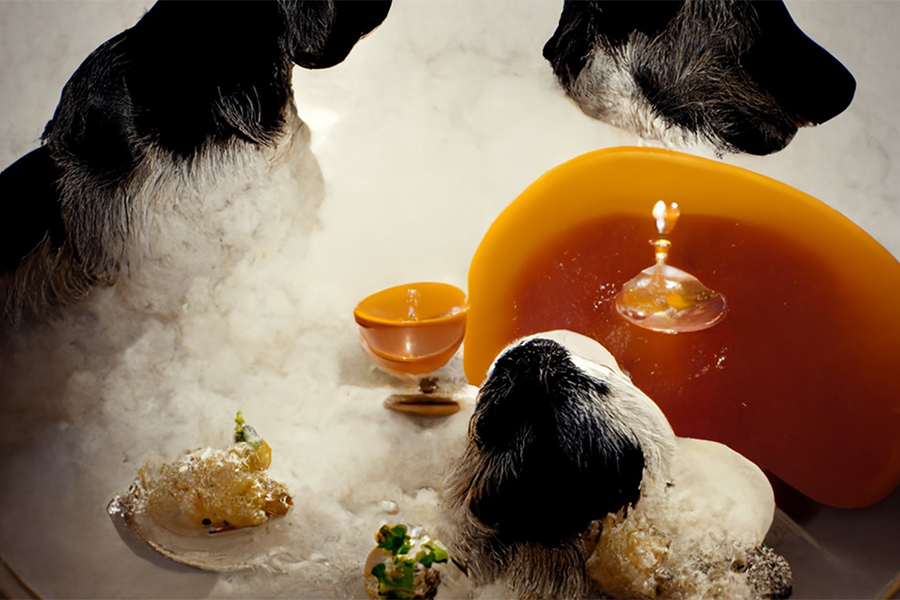You’re supposed to make 35% of your revenue through ancillary, of which food and beverage (F&B) is the lion’s share.
At least, that’s what the Rule Of Thirds says. Discovered by Montreal-based WXO Member Habo Studio, this is a rough guide to the sort of revenue split that leads to success – and a sustainable business.
It’s all well and good knowing what you should do… but how do you actually go about achieving this sort of percentage? And if you’ve already got a successful experience, how do you start adding F&B into the mix?
This is exactly what Jennifer Crook, lead creator of the World Experience Award-winning Dreamachine, asked the WXO community – so for our final Campfire of Season 10, we decided to host an open Campfire to crowdsource the answer.
Read on for 9 insights from successful experience creators making real revenue including Nick Moran of London’s Phantom Peak, Los Angeles-based experiential F&B expert Lanné Bennett, Tiago Gonçalves from Portugal’s AM Experience Group, Taylor Myers from New York’s Dead Letter No 9, and more.
1. F Is Much Harder Than B

The “F” or “food” part of F&B is notoriously the trickiest. In the words of Nick Moran:
“It’s low margin, complex, hard to get right… it’s hard to serve a beer that isn’t at least fine, but if someone’s burger is undercooked, they’ll have a terrible time. Drinks are where the margin is: do food at your own peril!” – Nick Moran
Drinks, though, are an easier sell, particularly if you’re based in a country like the UK where liquor licensing is quite straightforward. Hire some good people with bar experience to run it, partner with some alcohol brands, and you’re off.
If you can only do drinks, you might want to avoid food altogether – although this depends on the format of your experience. If you want people to stick around – like at Phantom Peak, where 70% of people stay for the entire 4.5-hour run time – you’ll need to provide some sort of food offering. Lanné Bennett agrees that “drinks are where the money is – food is there to keep people there.”
2. People Just Want Burgers!
Since Phantom Peak opened, Moran and co have tried over 40 different food options from pies to tacos, stews to burritos and beyond. The result? People just want burgers.
“People love an upmarket burger! They’re not coming for a night out and a salad. Make sure you have vegan and/or vegetarian options, too.” – Nick Moran
This reminds us of something talked about by Rory Sutherland. McDonald’s lost money one year, so did some research on what people wanted. They said they wanted to be healthy, so they introduced the McSalad. Sales did go up… but it turned out that people weren’t buying salads, they were buying Big Macs. The salad was a necessary excuse for them to go in the first place.
Seasonality is also important when considering your choice of food – ice lollies might work in summer, and hot chocolate in winter, for example.
3. Choose Products That Fuel Your Experience
Beyond burgers, your choice of food really depends on what fuel people need for your experience. Tiago Gonçalves puts on musical ice shows for families at Christmas. Unlike Phantom Peak, people arrive quickly, see the live show, and get out quickly, so the F&B needs to suit this.
“Our F&B strategy says that 1) the choice of products should suit the target audience and 2) the products should facilitate our operations: pay, grab and go.” – Tiago Gonçalves
F&B represents just 2-3% of income for Gonçalves’s shows, as they don’t have the time or ops to sell more labour-intensive options. However, this means that items like popcorn, candy, cookies, crisps, doughnuts and soft drinks are a great route to trake.
The core questions to ask are: what fuel do people need for my experience? What can we make work financially?
4. Seek Support From Brands & Experts
If there’s an appropriate partner available, it’s a no-brainer to explore a collaboration to support costs and aid non-competition. For Gonçalves, the majority of the F&B products they serve are in partnership with Portuguese brands and shopping centres.
Bringing an overall F&B partner on board to help with planning and processes can also be crucial if you’re not an expert in the area. There are lots of expensive mistakes that you can make: having someone who’s already made them and can advise is essential.
5. Find A Revenue Model That Works
There are different revenue models you can use, according to Lanné Bennett. If you’re renting your venue, you can get them to provide the food and it’ll be easier – but you won’t make any money on it. A trick of the trade is to partner with a local charity event.
“Pick your favourite charity, give 10% of all your alcohol sales to that charity, who can provide your liquor licence, and then bring in amazing bartenders and create a themed drink experience around your event that you can charge a premium for.” – Lanné Bennett
6. Watch Your Margins On Ingredients
If you’re creating your own menus, be careful with how you structure your menu to avoid issues with ordering and ingredient redundancy. If you have a list of 12 cocktails and an ingredient that’s only being used in one drink, for example, that’s not too clever. But if you can make 20 cocktails with 20 ingredients, you’re doing a good job.
“Ordering can also be a nightmare – if you can only get certain ingredients from certain vendors, it takes time and headspace away from the creative side of the business. Simplify, systematise and automate if possible to keep running without losing your head.” – Taylor Myers
7. Keep Your F&B In World
If you’ve spent time and creative effort building a dazzling new world, your F&B shouldn’t be a regular bar or restaurant that pulls you out of the experience – it should be one part of the experience that you’re having with all your senses. This is a crucial part of the success of Layered Reality’s popular immersive experiences, for example.
If not, the overall effect of your experience can be ruined – Bennett mentioned the opening weekend of U2’s residency at Sphere, which was “amazing”, but the F&B offering was “so disappointing” – there was no Guinness or anything special.
“If you care about dwell time, make it a little bit special. Have merch along the way rather than a shelf at the end and you can do a premium upcharge. If you’re brick and mortar, make F&B part of the experience. If you can make it in any way special, you can charge extra for it. It also adds a bit of guerilla marketing.” – Lanné Bennett
(For more on this, see Kevin Williams thoughts on “perchables and consumables” – perhaps we could add “giftables” to the list?)
8. Find Your Popcorn: The Special Sauce That You Can Charge More For
Myers has found that F&B can amplify your experience. In opening Dead Letter No 9, a “modern conversation parlour” slash cocktail bar, they were opening among a sea of other bars. To make it special and exciting, they needed to make what they were doing extraordinary.
“It was easier for us to differentiate ourselves as a bar, as it was designed as a crazy immersive experience. We have different conversation starters to make things feel special – you can buy a ‘message in a bottle’ on top of your drink for an additional $2. While we’re not making huge amounts from that, the margins are essentially 100%.” – Taylor Myers
Lou Murray challenges that this idea could go even further.
“Don’t go at it from a cost perspective – write amazing messages in bottles and charge $20 for it. We had a 400% return on popcorn at Cirque du Soleil. Find your popcorn and make it huge! Make those letters your thing.” – Lou Murray
What you’re actually charging for isn’t the thing itself, but what it represents. In the words of Jerry Lewis, “Charge more, but give value”.
“If you think about bottle service, you’re not purchasing a bottle of vodka, you’re purchasing a conspicuous display. Why not make a limited-edition cupcake you can only purchase at a particular time that everyone wants for their Instagram, no matter what it tastes like? It’s like the “Purple Wall” at Disney: there’s a Starbucks next to it that makes purple frappuccinos, so you can take your photo next to the purple wall. It’s not about how good the coffee tastes.” – Ramsay Wood
The context is incredibly important in how we perceive food – according to research mentioned by David Robson in his book The Expectation Effect, a fancy label was enough to change people’s perceptions of a beer with vinegar secretly dropped in it from 20% to 80% preferring it.
9. Make Your Food The Centre Of Your Experience

Done well, F&B doesn’t have to be an afterthought: it can be the centrepiece of your experience. There are plenty of examples of experiential dining and experiential cocktail bars that put food and drink front and centre, from Bompas & Parr’s culinary experiments to competitive socialising venues like Alcotraz and Avora to sustainable dining experiences like those done by Hidden Worlds Entertainment.
For Adrienne Fritze, the food they deliver in their experiences is critical.
“We work with food artists which we use as a selling point and make it part of charging a premium. The experience would be lacking without curated food: it’s a layer on the themed experience, something extraordinary that people can’t get anywhere else. Without food, we wouldn’t have a lucrative experience to sell. In the end, people do not remember what you said (or served), they remember how you made them feel…” – Adrienne Fritze
The WXO Take Out
F&B might be a headache to contemplate, but it can also add incredible value to your experience. As Murray says:
“Part of the artistry of this is that you can’t let the operations or limitations be the bane of your existence. You shouldn’t be thinking that because it’s tough to deliver, you shouldn’t deliver it. Food has been part of elevating experiences forever – it pretty much defines it. You might not want to offer it to everyone, but you should have it as a differentiator.” – Lou Murray
Food is just one more element in the palette of good experience design that we can play with to create a memorable, meaningful experience. So next time you’re designing an experience, ask yourself:
- What food do you need to fuel the audience through your experience?
- Which experts and partners can you work with to deliver a seamless experience?
- What could you do to create an item(s) that’s truly special or extraordinary to your experience?
Want to come to live Campfires and join fellow expert experience creators from 39+ different countries as we lead the Experience Revolution forward? Find out how to join us here.





